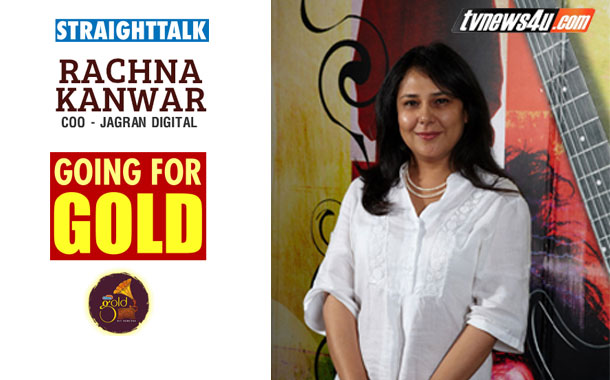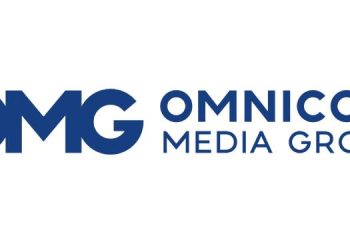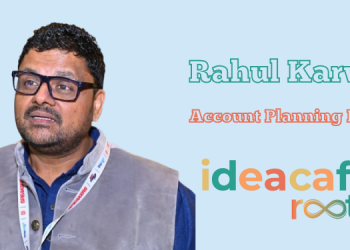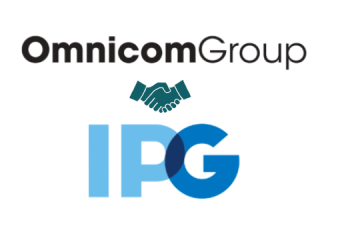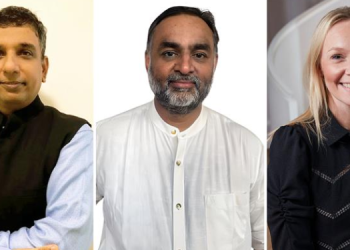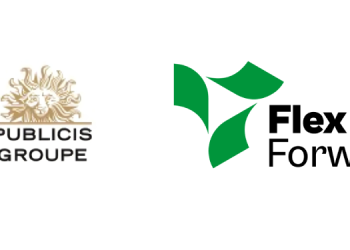She’s perhaps the only senior Digital Leader in Radio who brings a confluence of strong Print, Radio and Internet experience across a total of 17 years of professional association with entities that include India’s biggest English publishing conglomerate, one of the first and most significant FM Radio Networks of India, and the world’s biggest newspaper publisher. And had pioneered, as many as six years ago, the launch of web radio in India with PlanetRadiocity.
A Botany Honours student from Shimla, she wanted to be a scientist, but today, after having worked with the Times Group’s Times FM and IndiaTimes, followed by Radio City, and now the Jagran Group, Rachna Kanwar is spearheading the group’s digital plans as COO – Jagran Digital.
And now, the lady is going for gold, literally, in the web radio space, with the simultaneous launch of seven retro channels on planetradiocity.com. This launch is the result of a deal with India’s biggest repertoire of music, Sa Re Ga Ma – which also owns what is undoubtedly the best treasure trove of retro gems from Hindi films.
I caught up with Rachna Kanwar for a free-wheeling conversation. Edited excerpts from our conversation follow. – Chief Mentor, TVNEWS4U.COM
You’ve have been with Radio City for many years, you were with the Times before that, I think it has been a long and illustrious career in this space and you are probably one of the very few specialists in who bring about a confluence of print and radio on the digital-online space. You are now COO Jagran Digital. What is your role?

My role is quite interesting; it’s a mix of creating content and managing two very interesting websites, which are PlanetRadiocity.com — which I’ve been managing for a long time now, almost 8 years — and the other one is Mid-day.com which I’ve just taken over. Apart from this, I also create content. I’m also responsible for creating content for Jagran.com, which is primarily in the entertainment zone, so creating entertainment videos for them, creating the entire entertainment content for them which is completely B2C kind of content. Apart from that, if you leave aside entertainment, I am responsible for the entire video vertical, so all the audio-video content as well as entertainment specifically for the Jagran websites. They have a lot of websites, not just jagran.com.
OK, we have a fix on your role. Now tell me very simply about yourself. I know your profile but I would like you to describe where you come from, where you are headed as a professional. Your early days, influences, how you sort of targeted or stumbled into media…
I would say stumbled into media because I studied science and at some point long ago, I wanted to become a scientist. I grew up in Shimla, and when I got to the big city, that’s when the media exposure happened. I started with the Times, and it’s a good place to start, it’s like a training ground, so I started with Times FM radio, where I was for about 2 and a half years. After that I experimented with a whole lot of things like television production, documentary, film-making and all of that. So that was a great learning phase — in various other outlets, as a freelancer, as an employee… I experimented with all of that and 2000 is when I joined IndiaTimes, and I was there till 2006-2007, which is when I joined Radio City.
And education…?
That was in Shimla. I studied Botany honors, and post that I did a quick diploma in journalism. When I came to Delhi that’s when Journalism and a whole lot of other things happened and a whole lot of friends were in that field, even in my family people were related to media and entertainment.
So after seven years at IndiaTimes you moved on to Radio City…
Yes. I have been here for 9 years now.
And if I recall correctly, you’ve remained focused on online and digital all these 16 years?
Yes, since 2000.
You were earlier with an English publishing conglomerate, and after having spent a long time with the Radio City principals, you’ve recently got aligned with the world’s biggest publisher of newspapers, i.e. Jagran, created by a family that’s an iconic Media leader family of India, but it publishes in Hindi, so language change. Having said which, its Director Shailesh Gupta is the very cosmopolitan and forward-thinking. So how was working with the Times earlier, and how is it different with a Hindi leader?
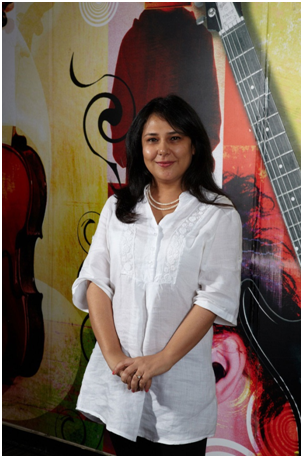
There are two things about this. First, I am quite comfortable with both languages, as I hail from the north. Even as kids growing up we learnt a lot of languages which have helped me in my career, including Urdu. So I know Urdu, Hindi and English really well. I’ve also been reading a lot of literature in all these languages. Apart from that, I think where the world is headed today, where the media, the internet is headed today in our country, I feel it’s very important to be in that space and address that TG which is currently in tier-2 or even the smaller cities and towns of our country. Because that’s where the consumption is growing. So that’s a very exciting space to be in.
And as far as your change of the work atmosphere is concerned…?
From Times to Radio City of course there was a huge difference in terms of culture or in terms of (moving from a primarily) English language, background, etcetera. But if you are asking me about moving to Jagran as a group, when the merger happened and the Radio City and Jagran culture kind of merged, fortunately for us, I think it’s been a very smooth merger, even in terms of culture the way people from one organization have kind of merged with or integrated into the other system has resulted in very little cultural change for us. In fact the Radio City HR head is now the Group HR head for Jagran, and like you said, you know Jagran as a group is very very progressive, so I don’t see too much of a mindset difference or anything.
What are challenges of the digital or the internet radio that the industry is facing?
The first challenge is that despite having been in existence since 2010 which is when Radio City launched India’s first internet radio Fun ka Antenna under PlanetRadiocity, internet radio still seems to be at a nascent stage on the kind of awareness the advertisers or even the consumers have.
Awareness is also a function of how much consumer and ad sales marketing you do, isn’t it?
Yes and No. One is of course the trade perception and the other is listener perception. Whatever music is there online, the listeners are consuming it through different platforms of delivery. I think apart from us (Radio City) in the radio industry, nobody else has really evangelised the medium, and I am strictly talking about web radio here, as separate from the streaming websites which are pretty huge like Saavn, Gaana etcetera, and we’re not going in that direction.
They are relatively recent, and still very well-known and perceived.
Yes, they are relatively recent and better known because they are pumping that kind of money, and the objective is totally different for us — we are the online leg of Radio City as a brand.
So what is your immediate priority for PlanetRadiocity at this point? Is it the bottom line, or is marketing it first with the ultimate bottom line objective?
As a business head, for me it is imperative to keep it viable. And the kind of monies which are going into the streaming websites right now — if you look at it from the licensing point of view, getting licenses from the labels point of view… for somebody who is looking at it as a long term prospect, it doesn’t seem viable. If you take all the music content from all the labels, in the long term it doesn’t look viable at all. Because of the prohibited pricing that is there right now. Minimum guarantees.
And your online model too is like the traditional individual needle hour-royalties based.
Yes, ours is quite different because we are not looking at putting all the content that is available in the market on this (web radio). We work on partnership basis and we see what is making sense to us in terms of its viability. If it makes sense to us we can curate it, we can create very interesting content out of it where our mother brand helps us in the sense that the music is already curated, it is extremely well researched. So even with lesser content, we can create very interesting shows and stations.
So at this point you are looking at a business plan and numbers to increase awareness?
Absolutely. We want to be in this game in the long run; we are not looking at a short term game.
Nobody else has pushed ahead on internet radio and web radio like Radio City has…
No, and that has also kind of held that mass awareness back. I’m not saying people don’t know about us. It should have been in India as it is in the developed markets right now. In mature markets most of the radio players will be found online.
But thankfully for the category, Radio City has persisted with web radio, putting its money where its mouth has been. What has been the story of the growth curve of web radio as far as Radio City is concerned, from the day you joined it 9 years ago?
The growth curve has also, initially, been a learning curve for us I would say. Not initially but a constant learning that we draw each and every year. I think from the time we launched PlanetRadiocity. At that time it was meant as a music website, the licensing norms were quite different at that time and it was quite affordable to run.
What were the licensing norms like then?
At that time there was a single body PPL which was giving out licenses and the costs were not that prohibitive. Internet music was quite new to people, and most of the music consumption online was happening through piracy. I think initially they were encouraging people to legally put together the norms, so that’s when we started.
Some of those challenges still remain, like piracy. Despite the fact that a lot of players in the market today are paying crazy amounts of money for music, the sad reality is that piracy is still thriving. So the way people are making money on music abroad, which is through subscriptions apart from the ad platforms, that is still not possible in our country because people are not willing to pay for subscriptions because everything is really available for free. So that is still there.
Anyway coming back to the journey and the growth curve, we realized that we have to stick to what we were as Radio City, and also that at some point digital is going to take over all (traditional) media, also keeping that vision in mind, it was for the long term that we decided to launch web-radio.
You launched the web radio in 2010, and you had joined them in 2007.
Yes, and 2008 is when we launched the website which is PlanetRadiocity. It was launched on a very small scale — like a two-member team to basically test the waters. We have always believed in that — think big, learn fast, take baby steps. That is exactly what we did, and that found traction. It was something which people really wanted because you can’t put terrestrial online. People want that kind of content online. Today people are consuming this content on the go. At times it becomes difficult to keep searching for songs that you want to listen to, and here is a lean-back curated product which is giving you that quality as well as convenience.
The lack of the kind of ease of access – as through a car stereo remote – that terrestrial FM provides… that could be a deterrent for web radio?
But when you switch off the (car) radio and are in office and on the go, that’s when this (web radio) becomes relevant. With this we’re saying, ‘Listen to Radio City, and when you switch off Radio City, listen to PlanetRadiocity’.
How actively do you cross promote web radio on your FM stations?
We have radio spots playing out, and on RJ mentions. They’re saying that even when you switch off Radio City, we are always with you through the internet. PlanetRadiocity is there and of course we are present on social media too. So the conversations continue.
Congratulations on your launch of Radio City Classics. It is further proof of your not only belief but also ongoing investment in web radio. I remember that many years ago, before any other private FM radio network, at least in Mumbai, it was Radio City that played as much as 30 to 35% of retro music, which the others soon began to emulate, so a belief in retro is intrinsic to the network DNA. And now you’ve launched Radio City Gold on PlanetRadiocity as the purely retro library.
Yes. Gold is the retro bucket. We’ve launched 7 new web radio stations – RC Hindi Gold, Kannada Gold, Tamil Gold, Telugu Gold, Lata Mangeshkar Radio, Kishore Kumar Radio and RD Burman Radio. This was based on research which showed us that legends such as Kishore Da, Bappi Lahiri, Mohammed Rafi, Ilayaraja, Dr Rajkumar and S. P. Balasubramanium continue to remain extremely popular. So with these seven new RC Gold stations, the total count of PlanetRadiocity.com stations goes up to 31.
In fact, we are the first and only radio station to have exclusive online music rights to Sa Re Ga Ma where listeners can tune into classics from the 1960s to the 1980s.

You’ve also pioneered retro programming in south-Indian languages.
See, our Hindi-speaking audiences aren’t the only ones who love music from the 1960’s, ‘70’s and ‘80’s. So we decided to bring to our global audiences the unique offering of retro across languages. So yes, you’re right, we are the pioneer to introduce retro programming in South Indian languages. Apart from Web Radio, we have hundreds of playlists from the Golden stars of Indian music; any artist — you pick any actor, singer, music director… we have their music. So this makes www.planetradiocity.com like a truly definitive for Golden Hits across languages.
We have always wanted retro content with us. We had it earlier, in between we didn’t have the license so we had to remove it from the site, but now we have launched seven web radio stations in this space, and again in four languages. We plan to add more languages to this. I don’t think any other radio station has anything like this online.
And this library is from Sa Re Ga Ma, which is huge, because it is a company that holds more than 55% of all the recorded music ever made in India…
Yes.
How have the listenership numbers on PRC grown over the last year?
We have seen a 100% growth from last year in terms of streams.
And from where PRC was when you launched it in 2010 to now, what has the growth been like?
Humongous! The growth has been huge ever since. When we started off, it was a testing phase. We had just one station. Today we are sitting on 30 web radio stations. We have nearly every category. Whatever choice of station you want, we have it. If you want Bollywood, regional, international, we have 6 international stations of rock, pop, the works. We have Indie in a big way. We are the strongest in one genre that is Indie music. Every year we also do our awards called Radio City Freedom Awards — in fact it is the last word in Indie music.
All online?
No it’s all on-ground, and it is a mega ground event that we do. There are nominations. It is like a 2-month process where we have people like Atul Chudamani, Nandini Shrikhar, Luke Kenny… a whole lot of experts as part of our jury. We have an internal jury that does the screening first. There are thousands of entries of bands that come in from all over the country, and last year we did it at Kingdom Of Dreams in Delhi. This time it was in Mumbai at the Hard Rock Café a few months ago.
So you are pumping money into web radio in a big way…
Absolutely. One is of course pumping in the money, and the other is creating our own medium in a big way. If others can come and promote their brands on our medium, then why not us promote our own brand. Plus internet is also promoted online in a big way; that is what we do through our social media search. Those are the kind of mediums we use for promotion. Then we do on-ground events. We do a lot of stuff like on a Sunday, something that’s called Free Verse Sessions, where we invite poets and spoken-word artists to come and recite their poems. That is again in the Indie basket.
Other categories on web radio… well, we have devotional which is very strong. We have a lot of tie-ups like with ISKCON and the Isha Foundation, and content partners also, which is non-music. So we are focusing in a big way on non-music content too. Apart from what our usual Radio City content is. We as the internet entity also create a lot of non-music content because that also reduces our dependency on somebody else’s (music) content.
So when you say you create the content, you are actually recording performances of bands etc and using it? I am talking about the music content.
Yes, but we don’t create music content from scratch, we don’t record their performances — that is something that artists are coming and signing up with us. I am talking about a lot of story-based content, humour- and fiction based, spoken- word content.
Terrestrial FM radio has two prime bands – the morning and evening drive primes. What are the corresponding prime listenership bands on web radio?
For us it is just the opposite, so during the morning and evening drive prime, we see a drop. Day-time is when we see a peak. We have conducted studies that tell us that most of the multimedia content is consumed around lunchtime. That’s when we peak, and through the day the peaks stay quite high. Towards the evening we see a dip and then again in the night, it goes up.
What are the kinds of audience profiles at different times of the day?
Because it is a global medium we see a lot of international NRI traffic at night; post-10 pm we see the peak. Because we are a radio brand there is also that loyalty with the brand. So even when people leave India and go abroad, they still identify with the brand and remain connected, so that helps us a lot over others which are newer products, newer apps and stuff.
Otherwise in India we have listeners from every nook and corner of the country — from Assam to south India, for which we have a lot of language stations, so we have a very strong base in the south as well.
So do you have two different sets of advertisers – at India waking hours and at the US/Europe waking hours?
We do, actually. All the ad networks, because the clients are abroad, peak at night for us because these are international ad networks who have partnered with, and all the local or Indian brands – they’re obviously advertising during India day time.
You have a big ad sales team? And what is the number of advertisers?
It’s a big number and a long list. How we advertise is also different from all these other players which are mostly dependent on the ad networks. We primarily depend on our FM sales force, the radio sales force, which sells this (web radio) in addition to (terrestrial FM) radio. So they also have an extra inventory to sell. It is innovative and quite different. These days advertisers are showing a lot of interest in digital, so it works really well for us.
So you also offer it as a frequency medium for the internet, to the traditional marketer.
Yes.
What are the opportunities for the internet radio to grow?
Like I said earlier, in the next couple of years, it is going to seep down into the smaller tier-2 cities and tier-3 towns. That is what the trend is going to be. The whole eco system — the mobile phones, the connectivity, the bandwidth increasing, the works. Basically, it is becoming more and more accessible.
You must be sewing up web radio deals with the telcos and the Jios of the world. They take music licensing directly. So what are your deals with them like?
We’re mostly sticking to non-music content when we talk to them. They already use a lot of content for which they take licenses, and now they have their apps. Most of them have their music apps too.
Even AIR has many apps which give you excellent smooth seamless access to All India Radio stations across all languages. What are your app plans?
We have also come out with an app, but unfortunately not all the music that we have desktop licenses for an be taken on to mobile, but now with Radio City Gold coming to us, I think that is going to be a big thing for us on our app.
And what about a Soundcloud and its ilk. Always a challenge…?
Soundcloud not really, and if you also mean the apps Saavn and Gaana, again, not really. Obviously in terms of the kind of audiences they draw they are much bigger in reach and all that, but I think we are playing a very different game, so we don’t look at them as competition. We want more people like that to come so that the awareness amongst consumers and advertisers too grows. So they are not really a thorn in our business.
The print giant that Jagran is — how much does it cross promote Radio City and especially PlanetRadioCity? Like Saavn uses huge ads and spends especially in the Times group publications and online…
We are just beginning to do that because it is a very recent association-acquisition. I think it will happen in the years to come, but as far as the Group is concerned, their full support is with us.
Which devices are the best pipelines of users to you? Is it mobile?
Right now yes. We are seeing our mobile site to be the biggest draw for traffic. Reach is the maximum through our mobile website. Not the app, not desktop, but the mobile, followed by desktop. The app right now we haven’t really promoted enough.
Why is it? The content license for mobile?
Yes. Right now, we don’t have the entire catalogue, all 30 stations, on mobile. Just the user-acquisition cost on mobile is very high and that doesn’t necessarily mean loyalty, because if you saw e-commerce and how they changed their strategy not too long ago from app-only to app and desktop both or app and mobile browser both. So people are seeing now that mobile browsers are becoming quite important rather than the app. Because while a lot of people are downloading apps and that costs the app a lot of money, significantly, retention is not that high. And you can’t keep more than 10 to 20 apps on your phone. I don’t think people are consuming this kind of content that way unless you are right on top. So browsers are driving most of the traffic.
What about placing your website as factory embeds on popular smart tv and smartphone brands? Any such promotions happening? Or as links on the homepages of mobile browsers like a Dolphin or uc Browser?
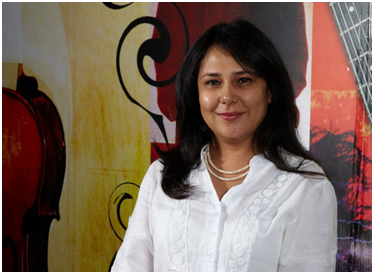
Yes, we do plan to do that and we’ve had a few chats, but everywhere, the issue is of licenses, so such an arrangement can only be as an aggregator.
What is the format of placing ads on the PlanetRadiocity feeds?
It’s quite similar to what we do on air. Not similar in the sense that ad breaks are not like on-air ad breaks, but we follow a clock. So it’s fully programmed across all 24-hours on each station, and obviously the frequency is lesser and the ad break time is also smaller.
Do you also measure listenership of ads?
Yes, we know exactly how many sessions are happening. It’s a very measureable medium.
Exactly, so do you share something like that with advertisers? At least to sell it?
We do. Absolutely. We share all our numbers which are ‘how many sessions are we doing, how many streams are we doing, per session what is the time spent, the TSL which is used for radio’… so all of that.
So you look after both, the PRC and mid-day.com websites, and after creating video and other entertainment content for both these sites plus Jagran.com and the other group websites. What is that team structure like?
We’re in the midst of setting up the team. It’s in various categories that we are creating videos. There’s a news team that sits out of Delhi. There is an entertainment team which is here in Mumbai, which has just been set up. Apart from that we create videos on education, health and lifestyle. So those are again in Mumbai and Delhi.
Talent. How do you find it? How do you retain it? What are the challenges?
Thanks to being a part of Radio City and to having the kind of culture we’ve developed, plus a very strong HR team, at least 50% of our people have been with us now for roughly 5-7 years, if you take the average. For the videos of course, we look to television for that talent. We’ve just set up our entertainment division, where we’ve just hired our entertainment editor, Parag Chapekar, who has joined us recently. I haven’t found it difficult at all for at least web radio to retain or hire talent.
And all your production and post-production facilities are in-house?
Yes
So like FM Radio has an AROI, would web radio want a similar industry body? Is there something similar or parallel that the industry is planning or would like to create for web radio?
We would love to, and we are also waiting for the Copyright Board to come together so that you get that entire piece. Right now there’re very few people who are there in the space, but we have approached a few people saying ‘Do you want to create an AROI-equivalent’? Hopefully in the future, it (internet radio) will have an association and a body.
What are your biggest pain points of web radio?
The biggest pain point is that there is no standard MG, so it’s all about whatever one labels feels like, it is asking for. That makes a whole lot of businesses unviable. So that’s the biggest pain point.
Which are the biggest labels that behave in an arbitrary way?
I don’t think as part of Radio City I should be saying anything pertinent to that, but I’m sure you know (laughs)
I understand. Okay so that’s one (issue). What else?
I would say that we have to figure out how to control piracy, and I think that I have helped raised that issue and a whole lot of others at various (industry) platforms. I’m sure everyone is aware of that, and they all know that the whole subscription game is right now not flying because of it, so I think that would be a very important thing that we would take up as an industry.
What are your plans for Mid-Day.com? How has it been so far?
It’s been just around 3 months since I’ve taken that over. Mid-day.com has huge potential. With a new CEO coming on the print side, we are looking at the entire product with a very fresh perspective right now, and though our strategy will flow from what the print strategy is, we are planning to bring back a whole lot of nostalgic elements that mid-day.com had and which people really identified with. So we plan to bring those back — vintage Mumbai bank, nostalgia, Mid-day mate which used to be such a hit… mid-day mate had its own kind of charm.
Why was it only for the guys? What about from a women’s perspective?
I plan to bring Mid-Day Mate for women as well. But a lot of vintage Mumbai is what we really want to bring back.
That would be a differentiator; it would create good library value as well.
Absolutely, also the whole local connect which Mid-Day had needs to be reflected online. Though it’s a global medium but you know, when you find the local connections, even people abroad really appreciate that. As there are many who have gone from these gallis and mohallas, and that’s what we plan to bring back.
So you plan to make it bigger…
Absolutely, and very Mumbai-centric. Very strongly Mumbai- and entertainment-centric.
How big is your delivery team for the network?
For Mid-Day? We have a small team. There are three-four parts to it. One is editorial, which is just about 8-10 people. The rest are back-end people. There is a social media team, web development, and a lot of synergies between the teams.
How big is your YouTube channel? Since you do so much of Video Content…
Not really that big as of now. We monetize all our video content on our sites. Our mandate is to put all our content on our sites. All videos we are producing are primarily for our Jagran websites.
You don’t put them on YouTube?
We do, but the focus isn’t really on YouTube.
And how many presenters do you have for PlanetRadiocity, who work on shows and such?
Put together, 5 to 6, who handle different genres. And we have a whole lot of people who do stuff for us as freelancers — especially the non-music content — who are not necessarily working with us (full time).
I want to end this conversation on a personal note. You said you’ve always been an avid reader. What are you reading right now?
Yes, I am a voracious reader, and I read on a daily basis, whatever it is. So, like right now, for example, I’m reading Zorba The Greek, and I just finished reading Salman Rushdie’s new book. Otherwise I love the usual suspects – Hemmingway, Rushdie… and I re-read Metamorphosis recently because we had gone to Prague. Hindi… I read a lot of Gyanpeeth Award winners. And Urdu, well, mostly poetry — Ghalib and others. We learned Urdu from the 6th standard onwards; it was a compulsory subject. I can write it too. (Smiles)


